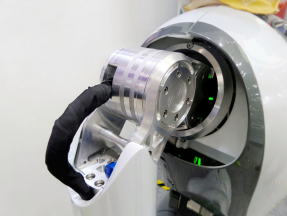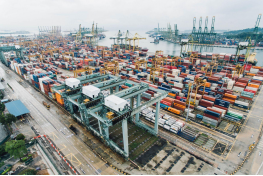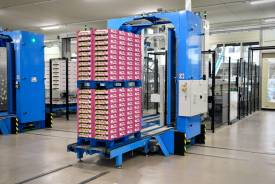Estimated reading time 5 minutes and 42 seconds
In terms of global trade, the shipping industry is one of the most critical industries. It has a vast network of ships transporting goods from one place to another. One challenge is the need for more skilled workers. Another is improving efficiency and reducing costs.
The shipping industry is looking at new technologies like AI to address these challenges. This is why they use artificial intelligence (AI) to improve efficiency, reduce costs and increase employee productivity.
Artificial Intelligence (AI) is a broad term for machines that mimic human intelligence. More specifically, it refers to computer systems capable of performing tasks normally requiring human intelligence when applied correctly by humans (e.g., visual perception, speech recognition).
The LTL freight shipping industry is already high-tech, with automated cargo ships and drones delivering goods to remote areas. But as artificial intelligence continues to develop and improve, it could be the next big thing in logistics.
Some forward-thinking companies are already using the technology: Amazon has been using AI to improve its supply chain since 2016, while FedEx has begun using robots to sort packages in its warehouses.
Of course, there are challenges, too; many companies aren’t ready for the shift toward AI, which means they may need help adapting their business practices for the future.

How AI is transforming the shipping industry:
Artificial intelligence (AI) is set to transform LTL shippers as it has other industries. The technology is already being used in shipping, but its full potential has yet to be realized.
The key benefit of AI is that it can automate many routine tasks and thereby reduce errors and inefficiencies. It can also help companies make better decisions by processing large amounts of information quickly and accurately, which means they can react faster to changing circumstances.
In particular, AI will help with three areas currently causing problems in the industry:
Shipping companies need better ways to forecast demand for services like parcel delivery and same-day shipments. With its ability to process vast quantities of data at lightning speed, AI could help them do this more accurately than ever before.
It’s also vital for carriers to know where their cargo is at any given moment — sitting on a dock or moving across the ocean — to plan their operations more efficiently and deliver goods on time. AI has already been used successfully in tracking LTL freight movements. Some carriers use RFID tags attached to containers that transmit data about their location back to a central database when they pass through checkpoints at ports or borders.
AI improves the shipping and logistics trucking industry:
AI is already being used to improve routing, supply chain, and fleet management.
- AI algorithms predict future conditions and make decisions based on that data
- They optimize routes and schedules for trucks, trains, ships, and airplanes.
- AI is being used to track cargo at ports. These systems can detect temperature or humidity anomalies and identify theft or tampering with containers before they leave the port.
- AI is being used to optimize warehouse storage space and improve supply chain visibility by tracking inventory levels and shipping volumes across multiple warehouses within one company.
- Advanced analytic tools also make it possible to predict customer behavior based on past buying patterns, providing retailers with insight into future sales trends.
Automation has been a buzzword in business for decades. With the advent of AI, automation has become more sophisticated and complex. For example, a company may use AI to automate its customer service department by using chatbots to respond to customers’ frequently asked questions (FAQs). Technology is also used to process large amounts of data more efficiently and effectively than humans.
AI can significantly improve supply chain management in LTL shippers and logistics.

Three ways businesses use AI to improve their supply chains:
- AI helps companies optimize their product packaging to reduce costs and increase efficiency.
- AI increases transparency throughout the supply chain by providing real-time information on each process step
- AI helps companies predict future demand based on past trends
The shipping and logistics industry is a prime example of how AI transforms an industry.
In the past, big-name companies like FedEx and UPS would have to hire thousands of people to sort packages and deliver them. Now, with the help of AI, these companies cut down on the number of employees needed for these tasks, while still providing excellent customer service.
AI is used in shipping and logistics in various ways:
This may seem mundane, but it’s difficult for machines to do it correctly. Humans can quickly identify specific shapes or colors that aren’t present in every package. However, with AI technology like deep learning algorithms (designed specifically for visual recognition), computers can now sort packages as well as humans do.
2)Handling customer service requests
AI helps companies handle customer service requests faster because it allows workers to focus on more complicated tasks that require human judgment instead of following a script or repeating common phrases repeatedly.
The future of AI in the shipping and logistics trucking industry:
AI will change how we move goods, where we transport LTL freight, and how long it takes to get
from point A to B.
The future of AI in the shipping and logistics industry is bright. The technology has already proven itself in many areas, including predicting product demand, automating tasks, and analyzing big data. As technology advances, it will become increasingly sophisticated and help businesses reduce costs and improve efficiency.
AI is already being used in shipping to improve customer experience by tracking packages more effectively and accurately than humans can. It can also automate the day-to-day work that makes up a company’s supply chain.
With the advent of AI, businesses can now develop highly efficient supply chain networks that incorporate data from multiple sources to increase productivity. This level of automation results in a significant reduction in human errors as well as a reduction in costs associated with manual labor.
AI also allows companies to predict disruptions before they occur, allowing them to take preventative measures before any damage is done. For example, if there is an impending storm, your AI system will automatically reroute your shipments to avoid any damage or loss of goods.
Automated shipping systems are another example of how AI is applied in the shipping industry. These systems use sensors and cameras along with GPS tracking devices to monitor shipments during transit until delivery.
Section: Is your business ready for the rise of AI in shipping?
The shipping industry is changing. Are you prepared to keep up with the demand?
Accurate Transport uses the latest technology, enabling our customers to keep ahead of the fast-paced shipping industry. Reach out to us to see how we can move your products in the most efficient manner possible.


